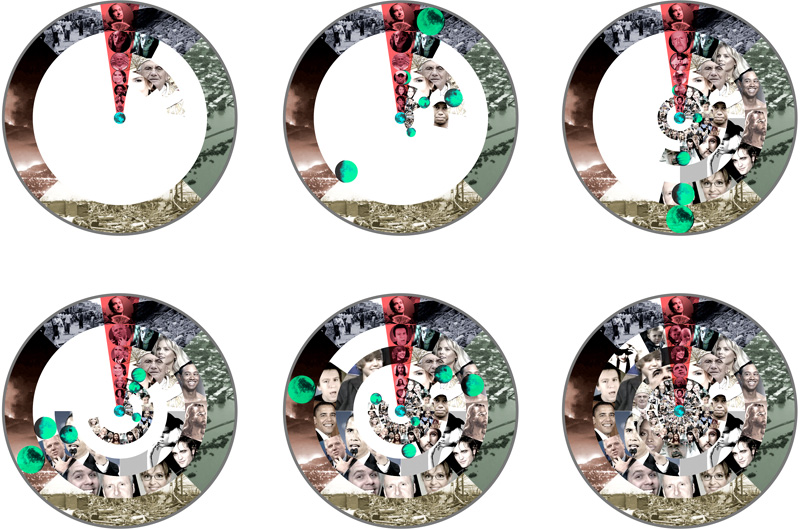On Vimeo
The Clock is composed of 168 tiles arranged outward from the center according to standard subdivisions of time. The sixty tiles of the inner ring represent seconds which, in turn, generate configurations of up to sixty minutes, twenty-four hours, seven days, four weeks, thirteen months (according to the abysmal calendar), four seasons, and one hundred years. As time passes the clock sequences the performance of the web by filling each tile with an image of the most viewed pop-culture topic for the preceding time interval. Over the course of a year, the clock slowly builds itself out until it contains a complete representation of the most important pop-culture topics for that year. At the stroke of midnight on New Years-Eve the planets realign and the clock resets itself so it can begin the process again. Just before resetting the clock contains a sequenced cultural snapshot of the year, one which represents the stories that most captured the public attention.

From a cultural and cosmological perspective clocks and calendars have always played important roles. Most cosmologies offer some explanation of “the beginning” and organize history from the perspective of this beginning, marking the occurrence of important events in terms of their distance from it, and embellishing timelines and systems of time with the myths associated. In this sense, time, and the systems for ascertaining its passing, become a format for the creation and expression of cultural histories and shared mythologies. Through their very association with time, clocks and calendars connect us to something bigger, something we all share, and in that way they are appropriate platforms for the expression of shared mythologies. It is not arbitrary that the greeks embedded their myths into the stars, which served as a calendar and which enabled them to mark the passing of time via the stories with which they so powerfully identified. Such a connection enriches perception of both story and time, allowing one to find meaning in time via story, and meaning in story via time. The Web Clock makes this connection, both by performing the stories of our culture as they happen, and by archiving those stories in a way that preserves their temporal context.
Note: The content of the clock has been pre-gathered, and the clock itself is not dynamically pulling from the Web. For the purposes of display the mechanics of the clock have been altered and do not reflect actual time.